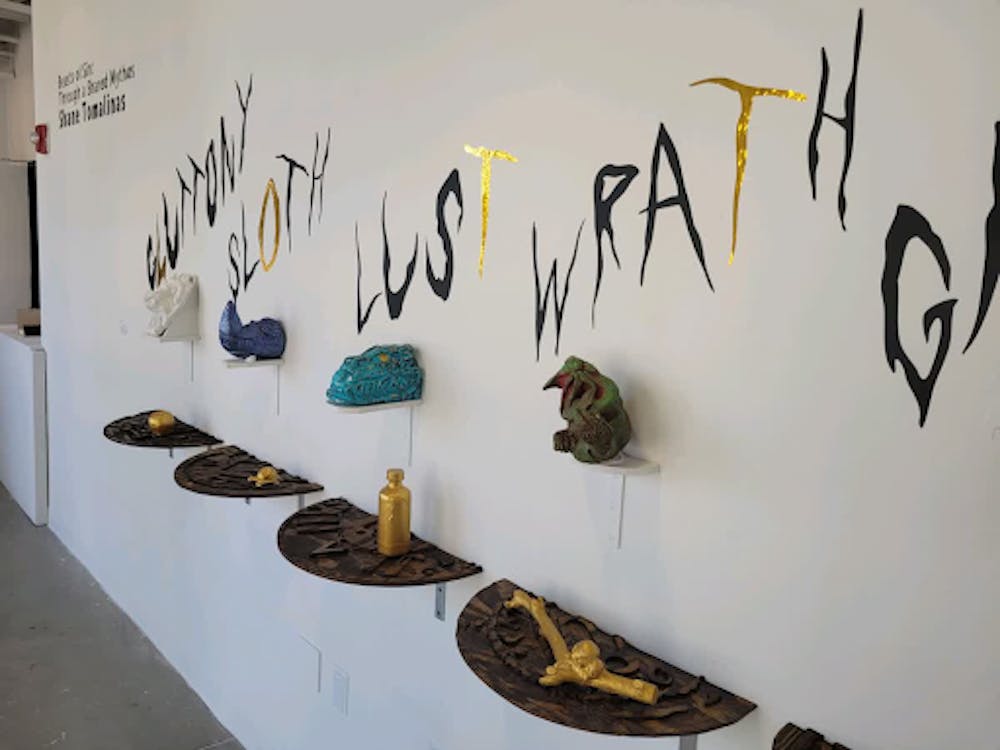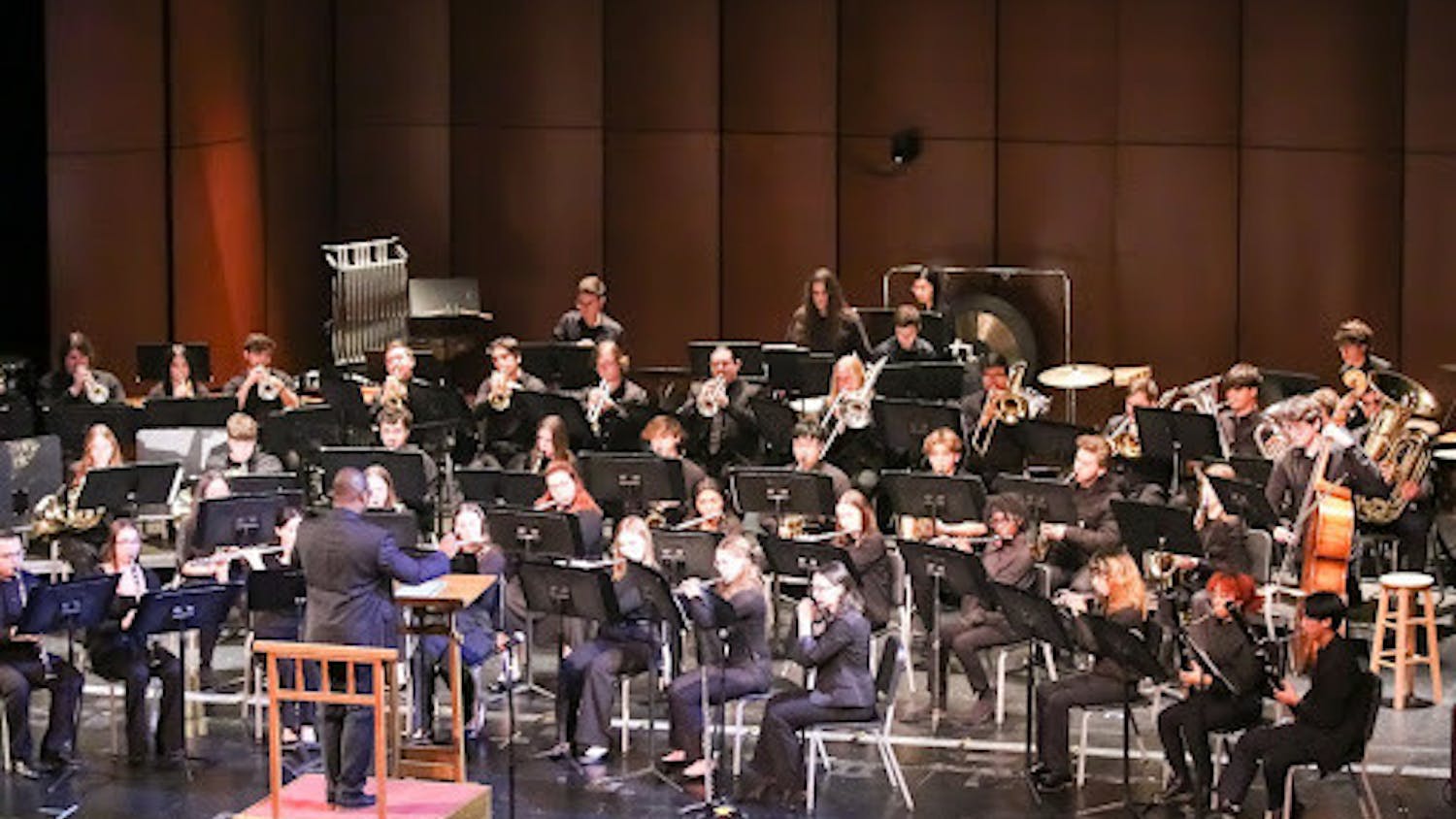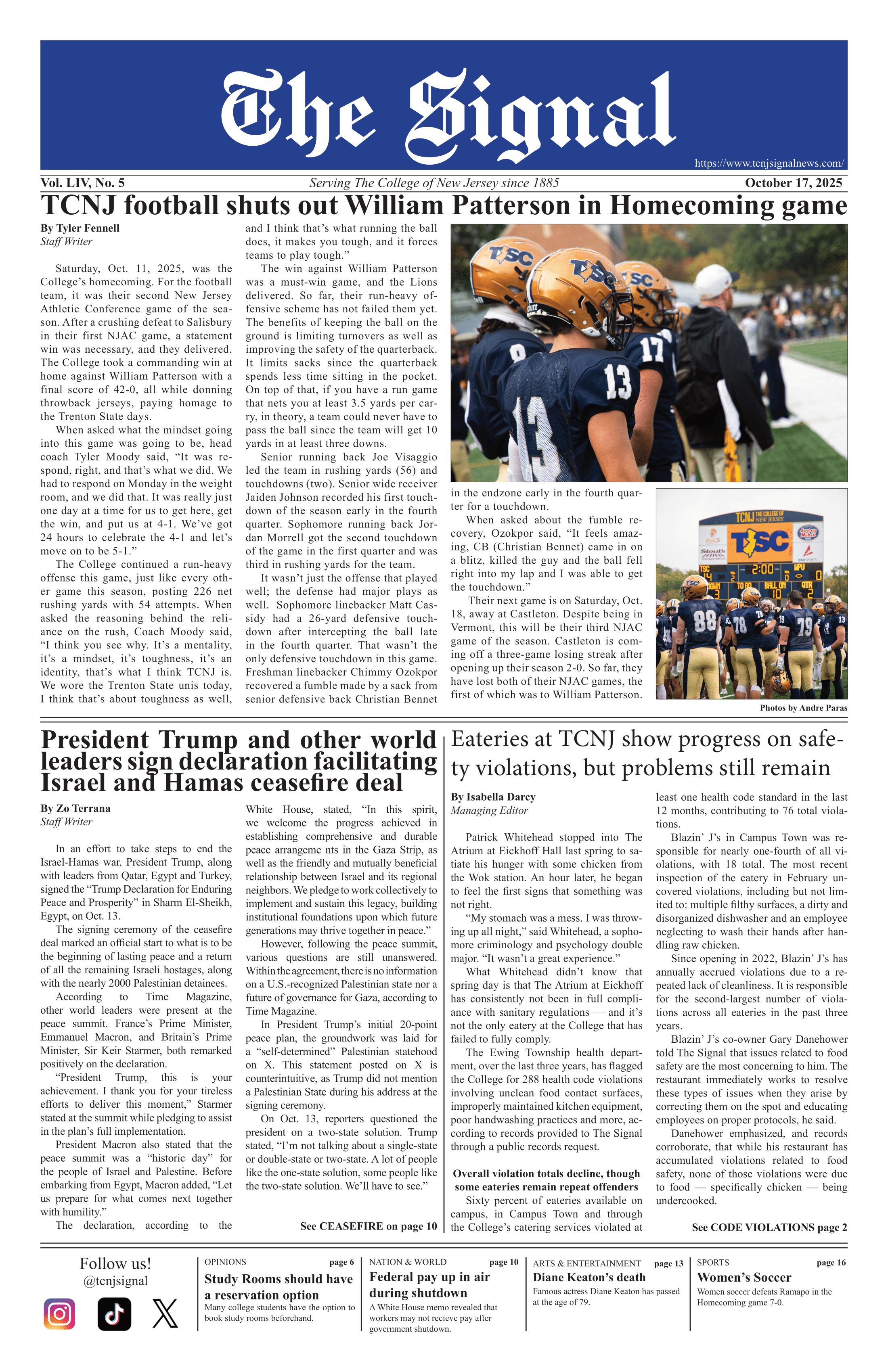By Sky Pinkett
Staff Writer
What better way to start a new month than with a new art exhibit? On Oct. 1, the College featured some of its very own in the opening reception to the first senior solo series of the year.
Seniors Raquel Faria, Gracie Harkins, Murphy Pickering and Shane Tomalinas were the talented artists that kicked off this series, with two seniors per room. From painting to sculpture to multimedia formats, the show truly had a diverse range of mediums.
Tomalinas, for example, uses a mix of clay, wood, plastic, and more to create seven dragon heads that represent each of the seven deadly sins. These dragon heads and their mythos are derived from several different cultures such as India, Greece, the Philippines and more.
“Looking at these larger stories is really interesting,” Tomalinas said. “You see how different plot elements and themes tie together throughout different cultures.”
The idea and fear of sin throughout these cultures and their mythologies is what ties them all together. According to Tomalinas, this common thread reveals the universal human experience.
“Every monster and god is a reflection of the inner human self and that was exciting to paint,” he added.
Sharing the room with Tomalinas was Faria, who centered her artwork around mental illness. A series of colorfully graphic and large paintings served as a visual representation of the struggles millions around the world, and even Faria herself, have had to deal with.
“I’ve experienced mental illness since I was very young,” she said. “It’s really important for me to be able to bring some of the symptoms that others tend to ignore or stigmatize up to the forefront because oftentimes people will make it out to be this horrible thing. And then people don’t want to talk about it and that leads to further limited discussions on mental health.”
Exposing the truth of this difficult topic is everything for Faria, and that is very apparent in the motif of eyes that are hiding like easter eggs throughout her paintings and throughout the room. Some of these eyes are closed and hidden by the layers of rich colors in the paintings, while others are blindingly white and staring out at the viewer.
Guests to these solo shows have more in store as they walk to the other side of the AIMM building, where Pickering and Harkins both tackle the subject of familial love and grandparents, but in different ways.
Pickering’s paintings take on a unique perspective to the cycle of life by featuring the parallels between the beginning of our lives to the end of our lives. Such a cerebral topic was inspired by the loving memory of her grandparents.
“I watched my grandmother decline mentally and my grandfather declined physically,” Pickering recalled. “So I was watching both aspects of those combined, and I became really intrigued with the cycle of life. I knew that for my senior show it was something I really wanted to focus on, and I’m so grateful that I did.”
All the paintings depict those mundane and little moments that we all experience by ourselves and with our loved ones throughout our lives. How emotionally affecting it is becomes clear to the viewer once they have walked through the entire sequence, imitating the life cycle from beginning to end.
Similar to Pickering, Harkins’ paintings display the small moments she and her family enjoy with her grandparents every Sunday for dinner. The paintings are ordered in a way that makes them feel like they are interacting with each other just like a family does at a dinner table.
“My grandparents have hosted Sunday night dinner for me, my cousins, my brother and my family ever since I was a baby,” Harkins said. “So I wanted to encapsulate that love and the familial comfort that I get from it because it's a constant in my life. It's also a thank you to my grandparents for the family that they built, and for giving me and my cousins such a close relationship.”
Harkins’ realistic style of painting transports the viewer right at the dinner table, bringing to life the familial love she intended to convey.
This exhibit will be available for viewing from now through Oct. 26 in AIMM rooms 119 and 111.







